Transform Your Look with These Iconic Japanese Hairstyles
Japanese hair styling offers innovative techniques and unique aesthetics for every hair type. This list explores eight iconic Japanese styles, from sleek and straight to bouncy curls and edgy cuts. Discover the pros, cons, and essential styling tips for each trend, including perms like the Magic Straight, Digital, and Air Wave, along with cuts and styling methods like the Hime Cut, Mori Girl, J-Beauty Blowout, Visual Kei, and Kogao techniques. Find your perfect Japanese-inspired look!
1. Magic Straight Perm (Thermal Reconditioning)
The Magic Straight Perm, also known as Thermal Reconditioning, is a revolutionary Japanese hair straightening technique that delivers permanently straight locks. Unlike traditional perms that add curl, this method restructures the hair's internal bonds to create a sleek, pin-straight appearance. The process involves a two-step chemical process. First, a specialized solution is applied to break down the existing disulfide bonds in the hair. Then, the hair is meticulously straightened with a flat iron. Finally, a neutralizer is applied to rebuild the bonds in their new, straight configuration. Pioneered in Japan in the 1990s, this technique quickly gained popularity worldwide and remains a sought-after solution for those seeking perfectly straight hair. Learn more about Magic Straight Perm (Thermal Reconditioning)
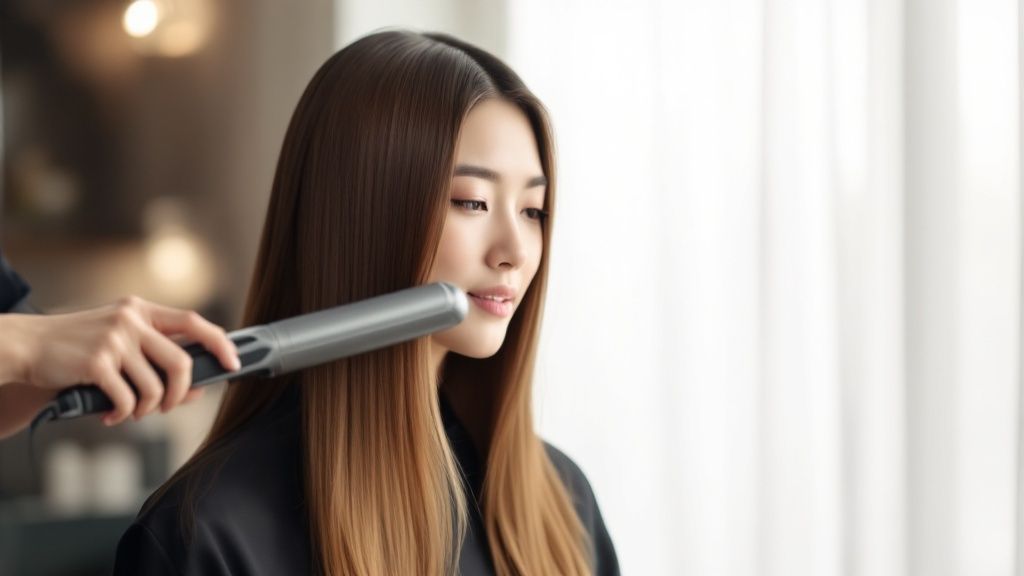
This method deserves a top spot on any list of Japanese hair styling techniques because of its transformative power and long-lasting results. It completely eliminates frizz and drastically reduces daily styling time, offering a significant advantage for those with naturally curly or unruly hair. The results are permanent on the treated hair, meaning the straightened sections will remain straight even in humid conditions. This delivers a consistently sleek, glossy finish that is highly desirable for many.
Features and Benefits:
- Permanently straight hair: Enjoy flawlessly straight hair until new growth appears.
- Dramatic frizz reduction: Say goodbye to frizz and hello to smooth, manageable locks.
- Low-maintenance styling: Save time and effort on daily styling routines.
- Humidity resistance: Maintain straight hair even in challenging climates.
- Silky, glossy finish: Achieve a polished and healthy-looking shine.
Pros and Cons:
Pros:
- Eliminates frizz completely.
- Significantly reduces styling time.
- Delivers permanent straightening on treated hair.
- Effective in humid conditions.
- Creates a silky, glossy finish.
Cons:
- Expensive (typically $300-800 USD).
- Time-consuming process (3-8 hours).
- Potential for hair damage if performed incorrectly.
- Creates a visible line of demarcation as hair grows.
- Not suitable for severely damaged or bleached hair.
- Difficult to reverse.
Examples of Successful Implementation:
- Yuko System: One of the original and most well-known Japanese straightening systems.
- Liscio Treatment by Milbon: A popular and effective modern thermal reconditioning treatment.
- Numerous Japanese Celebrities: Many Japanese celebrities maintain their signature straight hairstyles using this method, showcasing its effectiveness and popularity within the Japanese beauty scene.
Tips for Best Results:
- Wait 48-72 hours before washing: Allow the newly restructured bonds to settle.
- Use sulfate-free products: Preserve the treatment and maintain hair health.
- Avoid coloring hair for two weeks before and after: Minimize chemical stress on the hair.
- Touch-up new growth only: Prevent over-processing and damage to previously treated hair.
- Regular deep conditioning: Replenish moisture and maintain healthy, strong hair.
When and Why to Use This Approach:
Consider the Magic Straight Perm if you desire permanently straight hair and are willing to invest the time and money required for the treatment. It's ideal for those with naturally curly, wavy, or frizzy hair who seek a low-maintenance, sleek hairstyle. However, if you have severely damaged or bleached hair, this treatment may not be suitable, and consulting with a qualified stylist is crucial.
2. Digital Perm (Hot Perm)
The Digital Perm, also known as a hot perm, represents a significant advancement in perming technology originating from Japan. This innovative curling technique utilizes heated rods, the temperature of which is precisely regulated by a digital device. Unlike traditional perms that produce tight, springy curls, often looking curlier when wet, the Digital Perm creates soft, natural-looking waves that are more defined when the hair is dry. This unique characteristic is due to the controlled application of heat and specialized perming solutions, allowing for a gentler and more predictable curling process. The technology allows for customization based on hair type and desired curl size, making it a versatile option for achieving various looks.
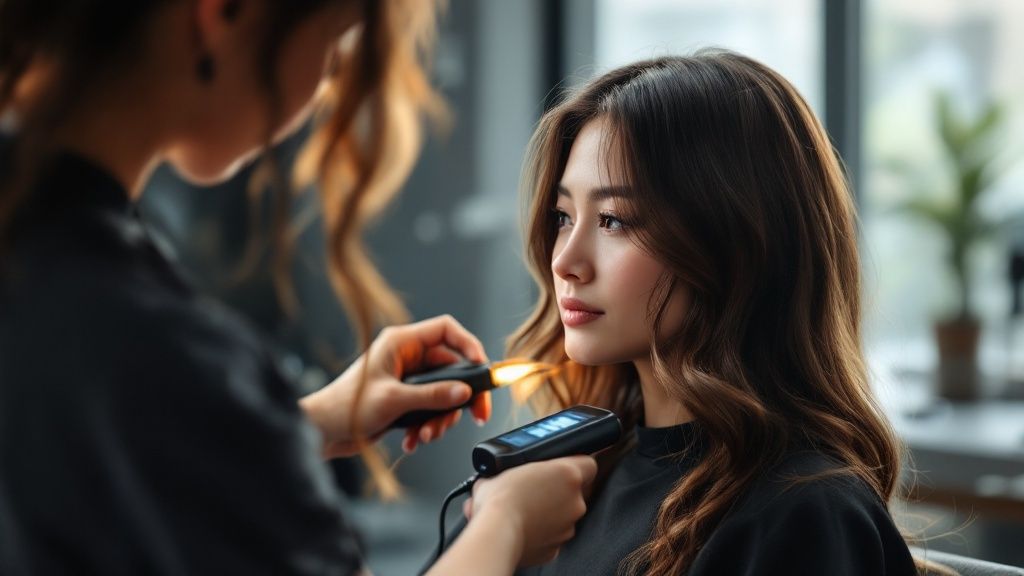
The Digital Perm deserves its place on this list due to its ability to deliver long-lasting, natural-looking waves, especially for those with Asian hair types that are typically resistant to traditional perming methods. It provides a modern approach to curling with significantly less damage compared to conventional perms. The digitally controlled heat and specialized setting solutions, often formulated in Japan, ensure consistent and predictable results. Key features include larger rods for looser waves, temperature customization, and a specialized setting solution.
This method is ideal for individuals seeking low-maintenance, natural-looking waves and body that last for an extended period. It’s perfect for those desiring the popular “air-dried” look with minimal styling effort. High-end salons in Japan, like Nepenji in Tokyo, offer modern versions of the Digital Perm, and it has been widely adopted by K-pop and J-pop celebrities for creating manageable, natural waves. Paimore, a Japanese beauty equipment manufacturer, is a prominent name associated with the Digital Perm, as well as the salon chain Number76, popular in Japan and Southeast Asia. This technique was notably popularized in the early 2000s within the Japanese and Korean entertainment industries.
Pros:
- Creates long-lasting, natural-looking waves and body.
- Curls hold their shape better than traditional perms.
- Less damaging than conventional perming when done correctly.
- Particularly effective for Asian hair types.
- Results typically last 4-6 months.
Cons:
- More expensive than traditional perms ($150-400 USD).
- Process takes 2-4 hours.
- Not suitable for severely damaged or over-processed hair.
- Limited availability outside major metropolitan areas.
- Requires specific aftercare.
Tips for Digital Perm Aftercare:
- Wait 48 hours: Refrain from washing your hair for at least 48 hours after the treatment to allow the perm to set properly.
- Curl-enhancing products: Use curl-enhancing shampoos, conditioners, and styling products to maintain definition and hydration.
- Avoid chlorine: Stay away from chlorinated pools for at least two weeks after the perm to prevent damage and discoloration.
- Scrunch and diffuse: Scrunch your hair while drying to enhance the curl pattern. Use a diffuser attachment when blow-drying to maintain curl shape and minimize frizz.
The Digital Perm offers a unique blend of technology and hair styling to achieve naturally beautiful, long-lasting waves. While it comes with a higher price tag and requires specific aftercare, the results and reduced damage compared to traditional methods make it a worthwhile investment for those seeking effortlessly stylish waves.
3. Air Wave (Air Perm)
The Air Wave, also known as the Air Perm, revolutionized perming in Japan, offering a gentler alternative to traditional perming methods, especially the heat-reliant Digital Perm. This innovative technique creates soft, natural-looking waves and volume without the harshness of excessive heat, making it particularly well-suited for those seeking that effortlessly chic, "undone" Japanese hairstyle. It deserves its place on this list for its innovative approach to perming, catering to the growing demand for low-maintenance yet stylish hair.
Instead of relying on heated rods that can damage hair, the Air Wave utilizes a unique chemical process combined with special foam or air-filled rollers. This gentler approach minimizes heat damage, making it a suitable choice for those with fine, damaged, or chemically treated hair. The process works by breaking down the disulfide bonds in the hair and reforming them into the desired wave pattern using the foam rollers. The milder chemical formula, often specifically developed for Asian hair types, helps create movement and volume rather than tight, defined curls.
Features and Benefits:
- Minimal Heat Application: Reduces the risk of heat damage associated with traditional perming.
- Foam/Air-Filled Rods: Creates softer, more natural-looking waves compared to heated rods.
- Gentler Formula: Specifically designed for Asian hair textures, minimizing damage.
- Natural-Looking Volume and Movement: Provides body and bounce without the stiffness of traditional perms.
- Long-Lasting Results: Enjoy your Air Wave for 3-5 months.
Pros:
- Less damaging than heat-based perms.
- Creates natural-looking volume and movement.
- Lower maintenance than Digital Perm.
- A good option for fine or slightly damaged hair.
Cons:
- Not as long-lasting as Digital Perm.
- Creates less defined curls.
- Still involves chemicals that can cause some damage.
- Results vary significantly based on hair type.
- May not be effective on very resistant hair.
Examples of Successful Implementation:
- Mucota Air Wave System: A highly popular system in Japan known for its effectiveness and gentle formula.
- Trendy Japanese Salons: High-end salons like MINX and AFLOAT offer specialized versions of the Air Wave, showcasing its popularity and effectiveness in achieving trendy Japanese hairstyles.
- Japanese Fashion Magazines: The Air Wave is frequently featured in publications like 'BiDan' and 'VOCE,' solidifying its status as a go-to style for achieving the coveted "natural wave" look.
Tips for Maintaining Your Air Wave:
- Alcohol-Free Products: Use alcohol-free styling products to prevent drying out your treated hair.
- Silk Pillowcase: Sleeping on a silk pillowcase can help reduce frizz and maintain the wave pattern.
- Sea Salt Spray: Refresh your waves between washes with a sea salt spray for added texture and definition.
- Avoid Heat Styling: Refrain from using straightening tools, as this will counteract the wave.
- Deep Conditioning: Regular deep conditioning treatments will help maintain your hair's health and the longevity of your Air Wave.
Why Choose the Air Wave?
The Air Wave is an excellent choice if you desire a natural, low-maintenance style with soft waves and added volume. It's particularly beneficial for those with finer or slightly damaged hair who want to avoid the harsh effects of heat styling. While the results aren't as dramatic or long-lasting as a Digital Perm, the Air Wave’s gentler approach and natural-looking results make it a compelling option for achieving that effortlessly stylish Japanese hair aesthetic. If you're looking for a perm that prioritizes hair health while delivering beautiful, flowing waves, the Air Wave is worth considering.
4. Hime Cut (Princess Cut)
The Hime Cut, translating to "princess cut," is a distinctly Japanese hairstyle with a rich history dating back to the Heian period (794-1185 CE). Originally worn by Japanese nobility, this style is characterized by its sharp, geometric lines: blunt, eyebrow-grazing bangs paired with face-framing side locks that are chin-length or slightly longer, and long, straight hair typically at chest length or beyond. The stark contrast between the different sections of hair creates a striking and instantly recognizable look. While traditionally a symbol of aristocracy and femininity, the Hime cut has transcended its historical roots to become a popular modern style, largely thanks to its frequent appearance in anime, manga, and Japanese street fashion.

The Hime cut deserves a spot on any list of iconic Japanese hairstyles because of its historical significance and enduring popularity. It’s a style that manages to be both classic and contemporary, representing traditional Japanese beauty ideals while also being a trendy choice for modern fashion-forward individuals. The cut's characteristic features – straight bangs, long side locks, and generally straight, long hair – create a unique frame for the face, often considered flattering for oval, heart, and some round face shapes.
Pros:
- Distinctive and Recognizable: The Hime cut is a head-turning style that immediately sets you apart.
- Flattering Face Frame: The side locks draw attention to the eyes and cheekbones.
- Cultural Significance: Embraces a hairstyle steeped in Japanese history and tradition.
- Suits Straight Hair: Works exceptionally well with naturally straight hair textures.
- Low Maintenance (after the cut): Styling is minimal once the cut is properly established.
Cons:
- Regular Trims Essential: Maintaining the precise lines requires frequent trims every 4-6 weeks.
- Face Shape Dependent: Can be unflattering for certain face shapes, particularly square or long faces.
- Difficult Grow-Out Phase: The varying lengths make growing out the Hime cut a challenging process.
- Straightening Often Required: Wavy or curly hair types will likely require regular straightening.
- Potential for Costume-like Appearance: Requires careful styling to avoid looking too theatrical.
Tips for a Modern Hime Cut:
- Soften the Lines: Introduce subtle layering to the back length and side locks for a less severe look.
- Sleek and Straight: Use a high-quality flat iron to achieve the signature sleekness of the Hime cut.
- Regular Trims: Schedule trims every 4-6 weeks to maintain the sharp, precise shape.
- Glossy Finish: Apply smoothing serums or hair oils to achieve the desired glassy, healthy shine.
- Consider Your Face Shape: Consult a stylist to determine if a Hime cut will complement your features.
Examples of the Hime Cut:
- Classical Representations: Depictions of Japanese court ladies in Heian period artwork.
- Modern Interpretations: Seen on Harajuku and Shibuya fashion influencers, often with modern twists and colors.
- Anime & Manga: Characters like Sailor Mars from Sailor Moon sport variations of the Hime cut.
- Celebrity Inspiration: Japanese model Kiko Mizuhara has been seen with modified Hime cuts.
The Hime cut’s enduring appeal lies in its ability to be both a bold statement and a nod to tradition. Whether you choose a classic or contemporary interpretation, the Hime cut offers a powerful way to express your personal style while connecting with a fascinating aspect of Japanese culture.
5. Mori Girl Hair Styling
Mori Girl (Forest Girl) hair styling offers a distinctly Japanese approach to hair, emphasizing natural beauty and a romanticized connection with nature. Inspired by a woodland lifestyle, this aesthetic centers around soft, loose waves or natural textures in earthy, neutral tones like browns, soft auburn, and natural black. The overall effect is intentionally tousled and slightly undone, creating a whimsical, effortless appearance that aligns perfectly with the broader Mori Girl fashion subculture. This style's emphasis on natural texture and low-maintenance upkeep makes it a refreshing alternative to more structured, high-effort hairstyles.
The core of Mori Girl hair styling lies in embracing imperfection. Instead of aiming for perfectly polished curls or sleek straight hair, the goal is to achieve a look that appears almost accidental, as though you've just emerged from a leisurely stroll through a forest. This is often achieved through simple braiding, twisting, and the incorporation of natural accessories like wooden clips, pressed flowers, or sprigs of greenery. The hair itself is typically medium to long in length, often with soft layers that enhance the natural movement and texture.
This style works beautifully with natural hair textures, requiring minimal heat styling. It's also adaptable for different hair types and lengths, growing out gracefully without obvious demarcation lines. For those with naturally wavy or curly hair, achieving this look is often as simple as enhancing their existing texture. Those with straighter hair can easily create soft waves using techniques like braiding damp hair overnight or applying sea salt spray.
Examples of successful Mori Girl hair styling can be found throughout Japan, particularly in Tokyo's Harajuku district, a hub for street style and fashion subcultures. The style is frequently featured in Japanese lifestyle magazines like 'Mori Girl Collection' and is a common sight in natural lifestyle cafes and shops in the Daikanyama area. Brands like SM2 and nest Robe often incorporate Mori Girl hair styling into their lookbooks and campaigns. You can learn more about Mori Girl Hair Styling to explore the trend further.
Pros of Mori Girl Hair Styling:
- Low-maintenance and forgiving: Doesn't require precise styling or frequent touch-ups.
- Works well with natural hair texture: Enhances natural waves and curls, minimizes the need for heat styling.
- Adaptable: Suits various hair types and lengths.
- Grows out gracefully: No harsh demarcation lines as the hair grows.
Cons of Mori Girl Hair Styling:
- Can look unintentionally unkempt: Requires a balance between styled and undone.
- May require specific products: Achieving the right texture may necessitate sea salt sprays, texturizing mousses, etc.
- Limited color palette: Typically avoids bright fashion colors in favor of natural shades.
- Not suitable for all settings: May be too informal for professional or formal occasions.
Tips for Achieving Mori Girl Hair:
- Sea Salt Spray: Apply to damp hair and scrunch to create natural, beachy waves.
- Braiding: Sleep with damp hair in loose braids for effortless texture upon waking.
- Natural Accessories: Use wooden clips, combs, and hairpins, or incorporate pressed flowers for an authentic touch.
- Mini Braids: Add small braids randomly throughout the hair for added detail and visual interest.
- Minimize Heat Styling: Preserve natural texture and hair health by limiting the use of hot tools.
Mori Girl hair styling deserves its place in this list because it offers a unique, nature-inspired approach to hair that prioritizes ease and natural beauty. Popularized by Japanese street fashion photographers documenting the Harajuku scene, lifestyle brands like Mori Girl Collection, and fashion bloggers such as Choco Mori, this style has become synonymous with a carefree, romantic aesthetic that continues to resonate with those seeking a less structured and more organic approach to beauty.
6. J-Beauty Blowout (Shiny Straight)
The J-Beauty Blowout is Japan's unique approach to achieving flawlessly straight, glossy hair without resorting to harsh chemical straightening treatments. This technique emphasizes meticulous blow-drying methods, utilizing specialized brushes and high-quality Japanese hair care products to create a glass-like sheen and perfectly straight alignment while maintaining natural movement and prioritizing hair health. Unlike Western blowouts that often focus on volume, the J-Beauty Blowout prioritizes sleekness, shine, and a polished, pin-straight finish.
How it Works:
The J-Beauty Blowout achieves its signature sleekness through a combination of factors:
- Precise Sectioning and Tension: Hair is meticulously divided into small, manageable sections and dried with controlled tension using specialized brushes, often boar bristle, to smooth the cuticle and enhance shine.
- Heat Protectant and Hair Care Products: Japanese heat protectants, frequently infused with ingredients like rice extracts or camellia oil, are essential for shielding hair from damage. Similarly, Japanese hair oils and essences are incorporated to nourish and add shine.
- Methodical Blow-Drying Technique: The process involves directing the airflow downwards from root to tip, following the brush, to seal the cuticle and create a smooth, reflective surface. A final blast of cool air further enhances shine and sets the style.
Examples of Successful Implementation:
The J-Beauty Blowout is highly sought after in Japan and can be seen in various contexts:
- Premium Salons: It's a signature service at high-end Tokyo salons like GARDEN Tokyo.
- Formal Occasions: Popular styling choice for special events like Coming of Age Day (Seijin Shiki).
- Professional Settings: A common style for Japanese business professionals, projecting a polished and sophisticated image.
- Editorial Styling: Featured prominently in fashion magazines like SPUR and CanCam.
Tips for Achieving the J-Beauty Blowout at Home:
While achieving salon-level results requires practice and the right tools, you can incorporate elements of the J-Beauty Blowout into your routine:
- Invest in a Quality Boar Bristle Brush: This type of brush provides excellent tension and distributes natural oils for enhanced shine.
- Use a Japanese Heat Protectant: Look for products containing rice extracts, camellia oil, or other nourishing ingredients.
- Dry in Small Sections: Divide your hair into manageable sections and dry each thoroughly from root to tip.
- Cool Air Blast: Finish with cool air to seal the cuticle and lock in shine.
- Apply Hair Oil Sparingly: Use a Japanese hair oil, focusing on the mid-lengths and ends to avoid weighing down the hair.
When and Why to Use This Approach:
The J-Beauty Blowout is ideal for those seeking:
- Glass-like Shine: This method delivers unparalleled shine without the commitment or potential damage of chemical straightening.
- Sleek, Straight Hair: Perfect for achieving a polished, sophisticated look.
- Improved Hair Health: The focus on heat protection and nourishing products can contribute to healthier hair over time.
Pros:
- Creates intense shine without chemical treatments.
- Results can last 3-5 days with proper care.
- Improves hair condition with continued use.
- Works for most hair types with appropriate adjustments.
- Non-permanent, allowing styling flexibility.
Cons:
- Time-consuming (45-90 minutes).
- Requires specific tools and practice.
- Results can be affected by humidity.
- More expensive than standard blowouts ($70-$120 in salons).
- Requires specific maintenance products for longevity.
Popularized By:
The J-Beauty Blowout has gained popularity thanks to:
- Renowned Japanese stylists: Such as Dai Michishita.
- Salon Chains: Like the LuLu Salon chain in Tokyo.
- Japanese Haircare Brands: Including Milbon and Lebel.
- Beauty Influencers: Showcasing the technique on YouTube and other social media platforms.
This technique deserves its place on the list because it represents a distinctly Japanese approach to hair styling, prioritizing not only sleekness and shine but also long-term hair health. It offers a compelling alternative to chemical straightening, providing a polished, sophisticated look that’s both stylish and healthy.
7. Visual Kei Styling
Visual Kei hair styling is a dramatic and avant-garde approach that originated in Japan's rock music scene during the 1980s. More than just a hairstyle, it's a statement of individuality and artistic expression that pushes the boundaries of conventional beauty. Visual Kei (meaning 'visual style') prioritizes theatrical, attention-grabbing looks achieved through extreme volume, asymmetrical cuts, and striking color combinations. This bold styling technique often features spiky textures, architectural shapes, and gravity-defying structures, all crafted with specialized Japanese styling products and techniques. Think sculpted masterpieces rather than everyday hairstyles.
Visual Kei achieves its distinctive look through several key features: extreme volume and architectural shapes built with heavy backcombing and texturizing, asymmetrical and often multi-length cuts that create dynamic movement, vibrant and often multi-colored dye jobs that range from shocking neons to deep jewel tones, and the incorporation of extensions for added drama and length. The style also plays with sharp contrasts, juxtaposing smooth sections with aggressively spiky ones.
This approach offers several advantages for those seeking a truly unique look. It allows for maximum creative expression and the development of a distinctive, recognizable personal style. The asymmetry inherent in Visual Kei cuts makes it adaptable to different face shapes, and its dramatic nature can transform ordinary features into extraordinary looks. Furthermore, it offers a strong connection to music and subcultural identity, particularly within the Japanese rock and visual kei scene. Learn more about Visual Kei Styling to delve deeper into this fascinating subculture.
However, Visual Kei is not without its drawbacks. It is extremely high maintenance, requiring substantial daily styling time (anywhere from 30 to 90 minutes). The extensive processing and styling can cause significant hair damage, and the frequent color touch-ups and specialized products make it an expensive style to maintain. Finally, its dramatic nature limits its wearability in conventional settings like offices or formal events.
Iconic examples of Visual Kei styling can be seen in the looks of legendary bands like X Japan, MALICE MIZER, and the GazettE. Specialized salons in Tokyo's Harajuku district cater specifically to this style, and annual Visual Kei hair shows at the Tokyo Hair Expo showcase its innovative and evolving nature. Publications like SHOXX and CURE magazines regularly feature the latest trends and styles. Key figures who popularized this look include Yoshiki and hide from X Japan, Mana from MALICE MIZER and Moi dix Mois, and legendary Japanese stylist Takayuki Shibata, as well as influential beauty salons like Baroque and RAD in Tokyo.
For those interested in experimenting with Visual Kei, here are some actionable tips:
- Build a foundation: Start with Japanese-style disconnected layers cut by a stylist familiar with the technique.
- Use Japanese styling wax: Products like Gatsby or NAPLA provide pliable hold and allow for shaping intricate structures.
- Protect your hair: Always use heat protectants before applying high-heat tools like curling irons and straighteners.
- Consider extensions: Clip-in extensions offer a temporary way to experiment with volume and color without permanent commitment.
- Preserve your style: Sleep with your hair wrapped in silk to minimize friction and maintain elaborate styles for longer.
Visual Kei deserves its place on this list because it represents a unique and influential aspect of Japanese hair styling. It showcases the creativity and artistry that can be achieved through hair, demonstrating how a hairstyle can be a powerful form of self-expression and a connection to a vibrant subculture. While not for the faint of heart, Visual Kei's bold and innovative approach continues to inspire and captivate, pushing the boundaries of hair styling and challenging conventional notions of beauty.
8. Kogao (Small Face) Styling
Kogao, literally translating to "small face," is a highly sought-after hair styling technique originating in Japan. It leverages the power of illusion, using strategic cuts and styling to create the appearance of a smaller, more delicate face – a cherished beauty ideal in Japanese culture. This technique goes beyond a simple haircut; it's a holistic approach that considers hair type, face shape, and desired outcome to achieve a harmonious and balanced look.
Kogao styling works by manipulating hair volume and placement. By concentrating volume at the crown and back of the head while keeping the sides relatively sleek, it creates vertical lines that elongate the face. Strategic face-framing layers, often tapered inwards, further enhance this illusion by gently contouring the cheeks and jawline. Soft, inward-curling C-curls at the ends and carefully placed bangs, like side-swept or curtain bangs, contribute to narrowing the forehead and framing the face beautifully. The overall effect is a slimmer, more oval facial silhouette, achieved without makeup or cosmetic procedures.
This technique is incredibly adaptable, working across a range of hair types and lengths. Whether you have long, flowing locks or a shorter, more textured bob, Kogao principles can be incorporated to create the desired slimming effect. The intensity of the Kogao effect can also be adjusted to suit individual preferences, ranging from subtle enhancements to more dramatic transformations.
Examples of Successful Implementation:
- Standard Offering at Japanese Salons: Kogao styling is a staple at renowned Japanese salons like AFLOAT and SHIMA, highlighting its widespread popularity and recognition within the Japanese beauty industry.
- Popular Among Japanese Celebrities: Many Japanese actresses and models sport Kogao hairstyles, showcasing its effectiveness and trendsetting status.
- Featured in Japanese Beauty Media: You'll frequently find Kogao styles gracing the pages of popular Japanese beauty magazines such as CanCam and MAQUIA, solidifying its position as a beauty standard. It’s also a commonly requested style for professional headshots in Japan, demonstrating its association with a polished and refined image.
Pros:
- Creates the optical illusion of a smaller, more oval face shape.
- Adaptable to most hair types and lengths.
- Customizable intensity – from subtle to dramatic.
- Complements Asian facial features particularly well.
- Can minimize specific facial features like wide cheekbones or jawlines.
Cons:
- Requires regular maintenance trims to preserve the layered shape.
- May necessitate daily styling to maintain the face-slimming effect.
- Not ideal for those who prefer a wash-and-go style.
- Can look flat if not styled with proper volume at the crown.
- Often requires heat styling (e.g., curling iron, hairdryer) for optimal results.
Tips for Achieving the Kogao Look:
- When consulting with your stylist, request inward-facing layers that gently hug your cheeks.
- Style your hair with a slight inward curl at cheek level using a curling iron or round brush.
- Concentrate volume at the crown of your head, avoiding excessive volume at the sides.
- Utilize vertical brushing techniques when blow-drying to create lift and elongation.
- Apply styling products at the roots for volume, avoiding weighing down the sides with heavy products.
Popularized By:
The Kogao trend has been significantly influenced by renowned Japanese stylists like Naoki Yoshihara and salon networks like GARDEN Tokyo. Japanese beauty programs like 'Bijo Saiban' and beauty YouTubers specializing in Japanese hair techniques have further contributed to its popularity and dissemination.
Kogao styling deserves its place on this list because it represents a unique and effective approach to hair styling that goes beyond mere aesthetics. It embodies the Japanese philosophy of enhancing natural beauty through carefully considered techniques and demonstrates how the right hairstyle can truly transform one's appearance. It offers a powerful tool for those seeking to subtly reshape and refine their facial features, achieving a balanced and harmonious look.
Japan Hair Styling: 8 Techniques Comparison
| Technique | 🔄 Implementation Complexity | ⚡ Resource Requirements | 📊 Expected Outcomes | 💡 Ideal Use Cases | ⭐ Key Advantages |
|---|---|---|---|---|---|
| Magic Straight Perm | High – Professional process taking 3-8 hours | High – Expensive chemicals, specialized tools (~$300-800) | Permanently straight, glossy hair free of frizz lasting 6-12 months | Virgin or minimally processed hair seeking long-term straight look | Eliminates frizz and reduces daily styling time |
| Digital Perm | Moderate to High – Precise digital temperature control | Moderate – Specialized hot rods and digital equipment (~$150-400) | Natural loose waves that hold shape better when dry; lasts 4-6 months | Medium to long straight hair, especially Asian types resistant to curling | Long-lasting natural waves with less damage than conventional perms |
| Air Wave | Moderate – Milder chemical process with foam/air rods | Low to Moderate – Gentler formulas | Soft, natural volume with airy waves lasting 3-5 months | Fine or slightly damaged hair desiring volume without tight curls | Lower damage with natural movement and low maintenance |
| Hime Cut | Moderate – Requires precision cutting and regular trims | Low – Skilled cutting without chemicals | Iconic, precise look with straight-across bangs and distinctive side locks | Straight hair and clients seeking a timeless, culturally rich style | Distinctive, culturally significant look that flatters the face |
| Mori Girl Hair Styling | Low – Casual, effortless styling with braids and texture | Low – Minimal products and natural accessories | Soft, tousled, natural texture with a relaxed, woodland-inspired aesthetic | Natural hair textures and those embracing a whimsical, low-key style | Low-maintenance, adaptable style that grows out gracefully |
| J-Beauty Blowout | High – Time-intensive technique (45-90 minutes) | Moderate to High – Specialized brushes and Japanese products | Exceptionally glossy, pin-straight hair with natural movement, lasting 3-5 days | Ideal for non-chemical shine and sleek looks at formal events | Enhances hair condition with glass-like shine without chemical treatment |
| Visual Kei Styling | Very High – Intricate, avant-garde with complex techniques | High – Requires specialized styling products and frequent care | Bold, dramatic look with extreme volume, asymmetry and vibrant colors | Clients seeking artistic, theatrical expression and subcultural identity | Allows maximum creative expression with a standout, signature style |
| Kogao (Small Face) Styling | Moderate – Precision layering requiring daily styling | Moderate – Standard styling tools with some heat applications | Optical illusion of a smaller, more delicate face through strategic volume and framing | Clients aiming for a slimming, face-enhancing effect, especially for Asian features | Subtle contouring that enhances facial proportions effectively |
Ready to Embrace Japan Hair Styling?
From the sleek sophistication of the J-Beauty blowout to the edgy creativity of Visual Kei, Japanese hair styling offers a world of inspiration. We've explored a spectrum of iconic looks, including innovative perming techniques like the Magic Straight Perm, Digital Perm, and Air Wave, as well as classic cuts like the Hime Cut. Whether you're seeking voluminous curls, perfectly straight strands, or a unique, textured style like Mori Girl hair, understanding these core Japanese approaches empowers you to create a look that truly reflects your individuality. Mastering these concepts not only allows you to achieve stunning hairstyles but also provides insights into the meticulous care and attention to detail that defines Japanese beauty culture. Want to complement your new Japanese hairstyle with a fresh, on-trend color? Check out these spring hair color trends from She Travels Chic for even more inspiration.
Ultimately, achieving these looks often hinges on using high-quality products specifically formulated for the intricacies of these styles. Ready to elevate your hair game with authentic Japanese hair care products? Explore the diverse selection at Buy Me Japan and discover the tools and treatments that will help you bring your Japanese hair styling vision to life. They offer a curated collection of products perfect for maintaining healthy, vibrant hair and achieving that coveted Japanese look.
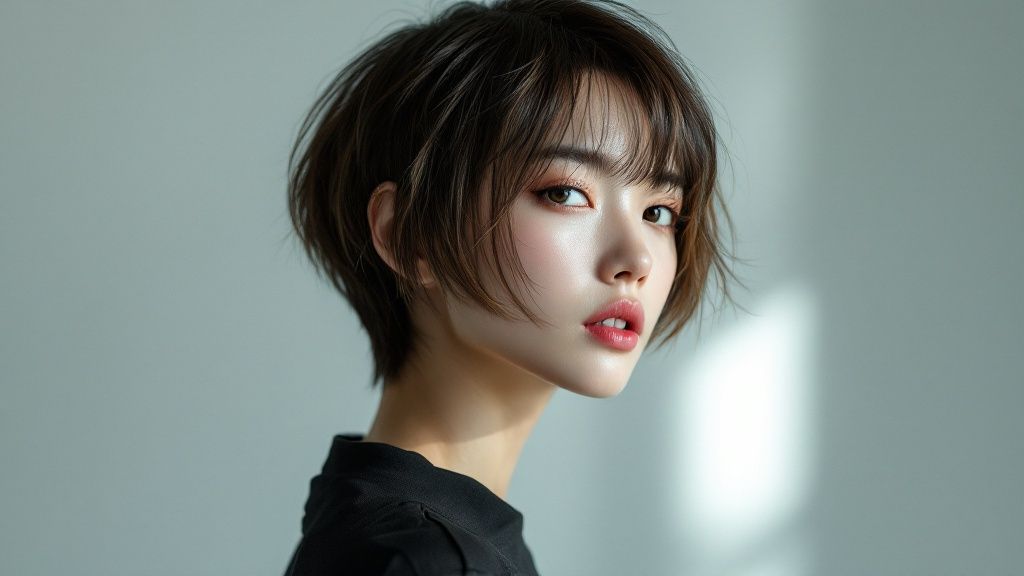
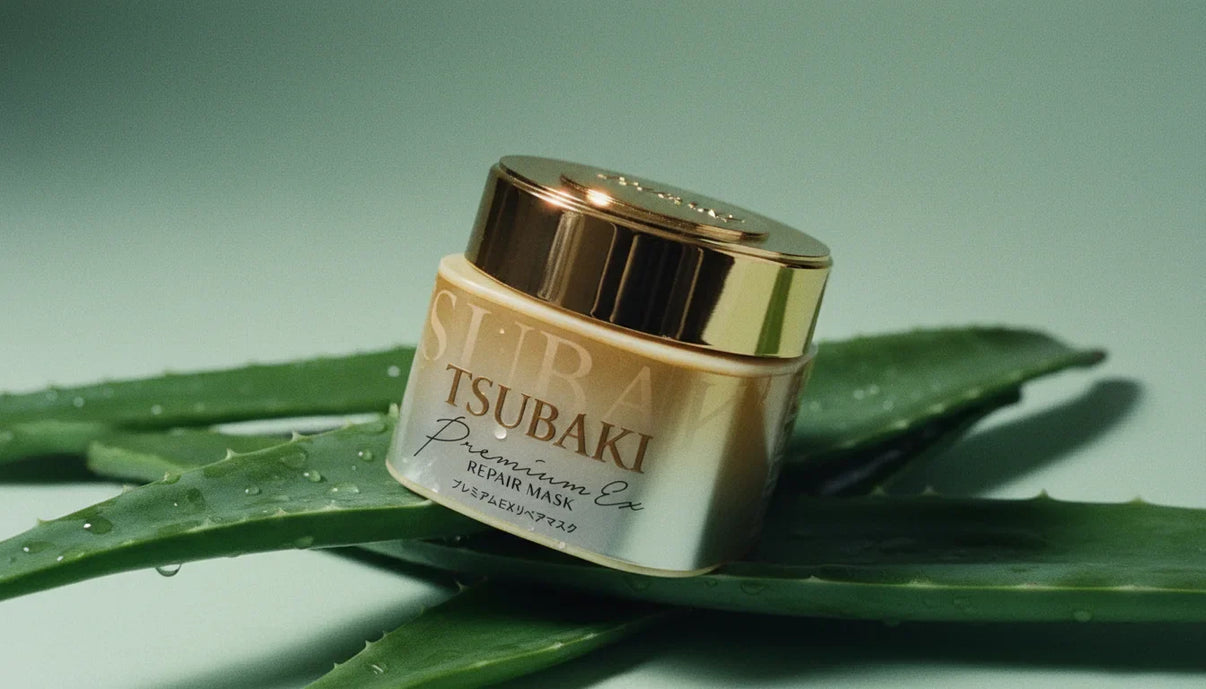
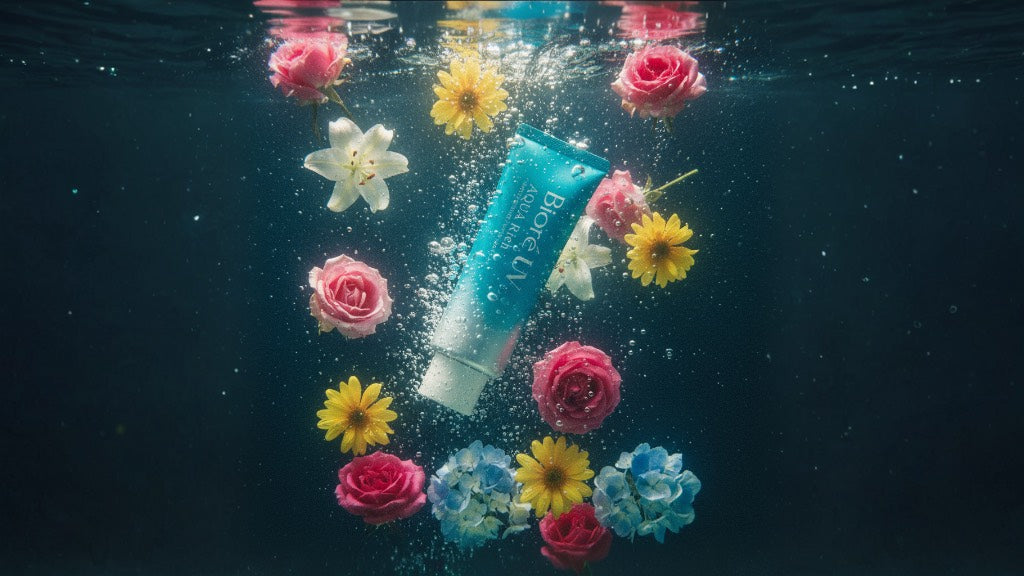
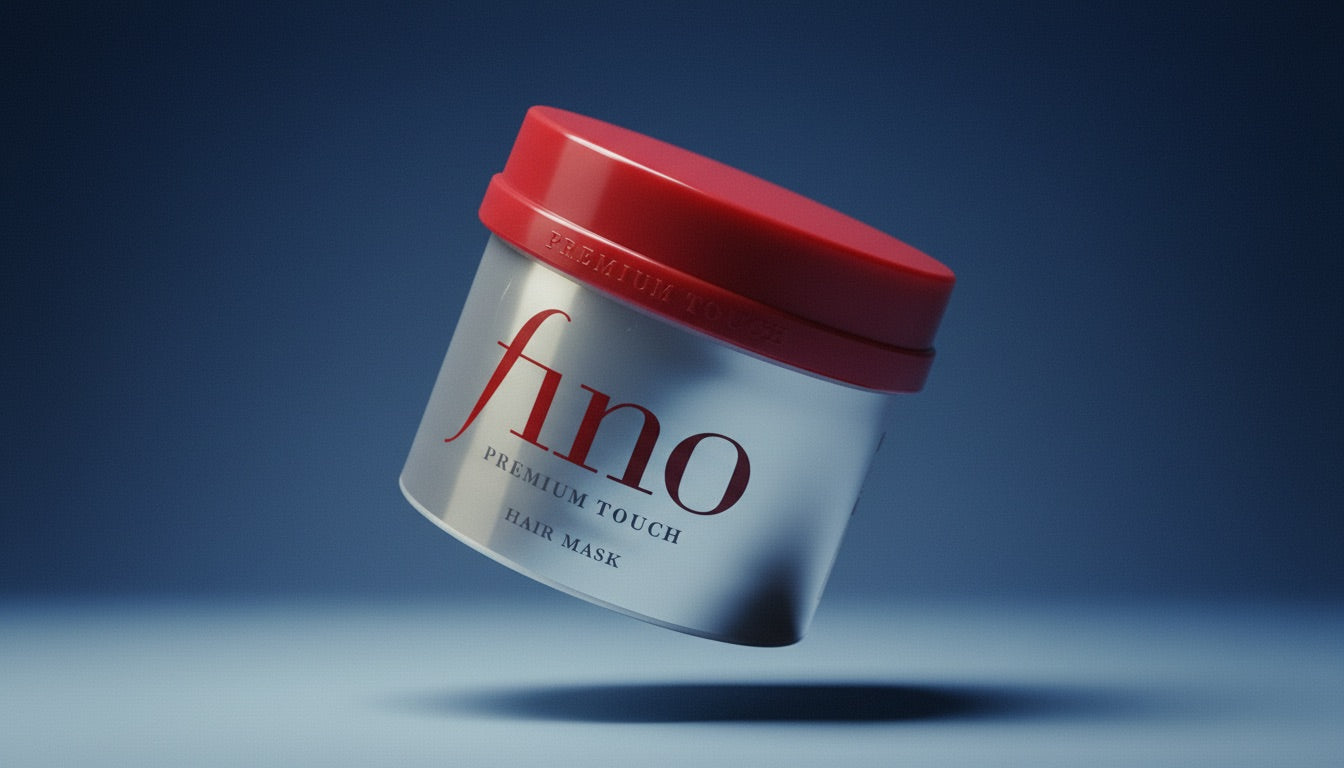
Share:
Shampoo Tsubaki Shiseido: Unlock Your Hair's True Potential
Japanese Hair Growth Products: Top Picks for Healthy Hair